Educational cooperation of public libraries during the lockdowns
Results of an online survey about how to address schools for digital reading and media education
Summary
Based on a nationwide questionnaire survey, the following article presents data on educational collaborations before and during the lockdown as well as on the librarians’ self-assessment of their competence in teaching reading and media skills digitally. It shows which learning spaces libraries could offer during the lockdown and how schools used these offerings. The consequences that the libraries themselves drew from their experiences during the lockdown are reflected against the background of the interests of other educational partner institutions, and conclusions are drawn for the design of educational cooperation and the training and continuing education of librarians.
Zusammenfassung
Auf Grundlage einer deutschlandweiten Fragebogenuntersuchung werden im folgenden Beitrag Daten zu Bildungskooperationen vor und während des Lockdowns sowie zur Selbsteinschätzung der Bibliothekar*innen hinsichtlich ihrer Kompetenz zur digitalen Vermittlung von Lese- und Medienkompetenzen präsentiert. Es wird aufgezeigt, welche Lernräume Bibliotheken im Lockdown anbieten konnten und wie Schulen diese Angebote nutzten. Die Konsequenzen, die die Bibliotheken selbst aus ihren Erfahrungen während des Lockdowns ziehen, werden vor dem Hintergrund der Interessen weiterer Bildungspartnerinstitutionen reflektiert und Schlüsse für die Gestaltung von Bildungskooperationen sowie für die Aus- und Fortbildung von Bibliothekar*innen gezogen.
1. Theoretical background
As a result of the Corona pandemic and the associated lockdowns, libraries, as third places,1 were faced with the challenge of fulfilling their social role, which consisted in offering an informal opportunity to meet. Creative solutions in the sense of a liquid infrastructure2 were quickly developed, such as delivery services or online readings.3 Before the pandemic, library tours and specific events to promote reading and media literacy were already taking place. Educational institutions were thus able to benefit from the technical equipment of libraries and their expertise in media education.4 However, the already established analog learning space of the library ceased to exist in the lockdown and now had to be thought of digitally, but this was only partially successful.5
In addition to providing media, cooperation with formal educational institutions such as daycare centers and schools to enable participation opportunities is a central task of libraries.6 This is one of the German Library Association’s (dbv) demands in 2021. Another is – and the dbv demands this in its report on the situation (2021) – to design analog and digital learning spaces.7 Both aspects will now be explained in an introductory way.
Enabling opportunities for participation can already be found in the capability approach of the American philosopher Martha Nussbaum, which is cited here as a normative perspective. She and fellow philosopher Amartya Sen posed the question of what each person is genuinely enabled to do or be.8 She distinguishes three capabilities to examine a person’s capabilities within a society. While basic capabilities are innate, internal capabilities are developed characteristics. These include knowledge or health.9 On the other hand, combined capabilities represent the totality of all choices and actions available in a specific society in a specific situation.10 Combined capabilities, therefore, result from the internal capabilities and the framing conditions of a society. Combined capabilities – such as the training of the senses, imagination and thinking or practical reason, and control over one’s environment – can only be developed if education and access to education are made possible as prerequisites. This is where libraries play a central role. Libraries provide access to information for everyone in a society. They provide media in various forms and types, thus enabling inclusive access. Their diverse offerings ultimately support educational and developmental processes in lifelong learning.
The second point that the dbv called for in 2021 is the design of analog and digital educational spaces. If libraries are understood as teaching-learning spaces,11 it quickly becomes clear what libraries already do to offer learning spaces. In addition to teaching information literacy and enabling social, inclusive, and participatory learning12 in analog and digital spaces,13 libraries represent the institutions that promote digital competencies and thus the “language of the 21st century”.14 In this context, libraries are, above all, essential educational partners for schools and teachers. They support schools and teachers in terms of content, didactics, and technology in teaching reading and media skills.15
Even before the coronavirus pandemic, however, the 2018 ICILS (International Computer and Information Literacy Study) showed that Germany lags behind internationally in promoting skills related to information and communications technology (ICT), although these are so important. In all areas, Germany was posited below the international average. In the 2018 study, only 41 ٪ of the German teachers surveyed said they teach their students how to check the credibility of digital information, whereas the international mean was 74 ٪.16 A similar difference can be seen with regard to promoting efficient access to information. While only 53,6 % of the teachers surveyed in Germany stated that they promote this competence, the international mean was 83,9 ٪. This is precisely where the potential of libraries lies in promoting digital media skills, whereas the figures show that schools still focus mainly on analog learning. Therefore, educational partnerships in this area can be highly efficient.
Then, when the coronavirus pandemic began in 2020 and the lockdowns, including school closures, followed, analog learning spaces were eliminated in some cases. Schools and teachers were tasked with organizing and designing their lessons as digitally as possible. But a study by the German School Portal illustrates that this was only implemented to a very small degree, especially at the beginning of the pandemic. The results show which task and lesson formats teachers used in homeschooling. Analog offerings such as worksheets dominated for a long time.17 In addition, the Medienpädagogische Forschungsverbund Südwest (Media Education Research Association Southwest) concluded in its special study JIMplus that teachers were no longer the leading contacts for students when it came to learning. Instead, peers or video platforms such as YouTube took over important teaching tasks: While 32 ٪ of the students said that school instruction helped them to learn, 50 ٪ said that friends helped them, and 45 ٪ said they used online tutorials.18
Libraries, on the other hand, quickly showed flexibility and developed a new liquid infrastructure through offers such as “Click and collect”,19 digital offers such as online readings,20 or even synchronous and asynchronous digital offers.21 In addition, libraries developed digital learning formats during the lockdowns.22
Already before the pandemic, educational institutions could benefit from the technical equipment of libraries and their expertise in media education.23 So far, it is unclear how the lockdowns have affected the services offered by libraries on the one hand and the cooperation with schools on the other. This is why the authors wanted to determine to what extent educational cooperation between libraries and schools has been maintained or modified since the beginning of the pandemic.
2. Methodology and sample
Using an online questionnaire, we surveyed the design of collaborations between libraries and schools during the pandemic and the lockdowns. We wanted to know which parts of public libraries’ services were maintained, which were modified, and what the demand was like. For this purpose, we devised a semi-standardized questionnaire consisting of closed and open-ended questions. The questionnaire was designed in such a way that institutional conditions could be queried as well as subjective aspects of the individual persons (e.g., the evaluation of their own authority).
The questionnaire was sent out throughout Germany via mailing lists such as Forumoeb, the newsletter of Bildungspartner NRW, and Twitter as a digital survey, accessible via a link. A total of 173 people from public libraries was reached.24 Most people in the sample were between 46 and 65 years old and often had between 20 and 30 years of professional experience. 72 % of the respondents reported working in managerial positions, either managing the entire library or managing individual departments.
The following tables show the distribution of libraries within Germany (tab. 1) and the library type (tab. 2). Libraries from NRW were most represented, followed by Hesse and Baden-Württemberg.
A full 75 percent of the libraries were city libraries.
Table 1: Geographical distribution
|
Federal State |
Proportion |
|
Northrhine-Westphalia |
43,4 % |
|
Hesse |
24,6 % |
|
Baden-Wuerttemberg |
14,6 % |
|
Bavaria |
5,3 % |
|
Lower Saxony |
3,5 % |
|
Berlin |
2,3 % |
|
Rhineland Palatinate |
1,8 % |
|
Brandenburg |
1,8 % |
|
Mecklenburg Western Pomerania |
1,8 % |
|
Schleswig Holstein |
0,6 % |
|
Thuringia |
0,6 % |
Table 2: Distribution according to library type
|
Type of Library |
Proportion |
|
City Library |
75,0 % |
|
District Library |
8,7 % |
|
School Library |
6,4 % |
|
Church Library |
3,5 % |
|
Children’s Library |
2,9 % |
|
Media Centre |
0,6 % |
The survey was conducted between November and December 2021, so the questionnaire results relate to librarians’ experiences in the two lockdowns in Germany.
3. Results
Before the coronavirus pandemic and the associated lockdowns, it was mainly the early education institutions that cooperated with libraries. For example, 91 % of the libraries surveyed said they had cooperated with daycare centers and elementary schools before the pandemic. Comprehensive and grammar schools were partners for 57 % and secondary schools for 23 % of respondents. Less frequently, open all-day institutions (33 %), schools for special education (33 %), vocational schools (18 %), and vocational colleges (14 %) were indicated as cooperation partners. Using primary education as an example, fig. 1 shows that contact between libraries and schools decreased during the lockdowns, regardless of the type of contact. 20 % of the libraries even stated they had no contact with their cooperation schools during the lockdowns.
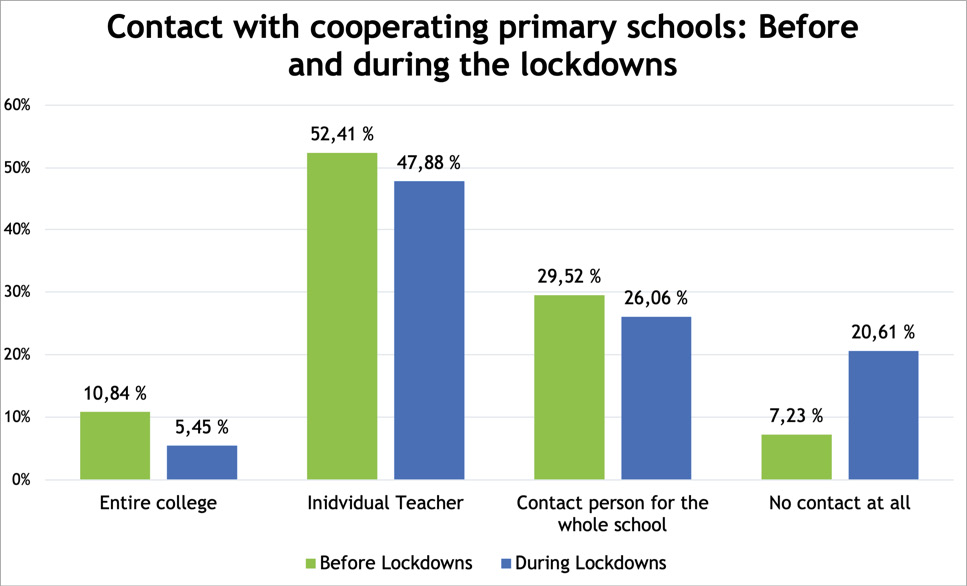
Fig. 1: Contact with cooperating primary schools (N=165)
Next, the specific offers before and after the lockdowns are examined. This is followed by a presentation of the librarians’ media literacy competencies and the results of questions with regard to personal challenges and lessons learned from the pandemic.
3.1 Library services before and during the lockdowns
As the survey showed, traditional offers such as guided tours (96,5 %), events on reading (87,6 %), media literacy (72,2 %), and language promotion (34,3 %) were most common in many libraries before the lockdowns. Offerings that were mentioned less frequently include coding activities and those with social aspects, such as promoting cultural exchange (16 %), promoting social participation (14,2 %), promoting social development (10,7 %), and promoting democratic awareness (7,1 %).
During the lockdowns, libraries developed various digital offerings as shown in fig. 2. These were primarily offerings such as digital rallies (41,2 %) designed with the apps Biparcours or Actionbound. In addition, digital resources such as links to selected topics or YouTube videos were provided (38,7 %). Under the heading “others”, the librarians surveyed stated, among other things, that additional digital support was provided for research tasks with the help of the Zoom videoconferencing platform.
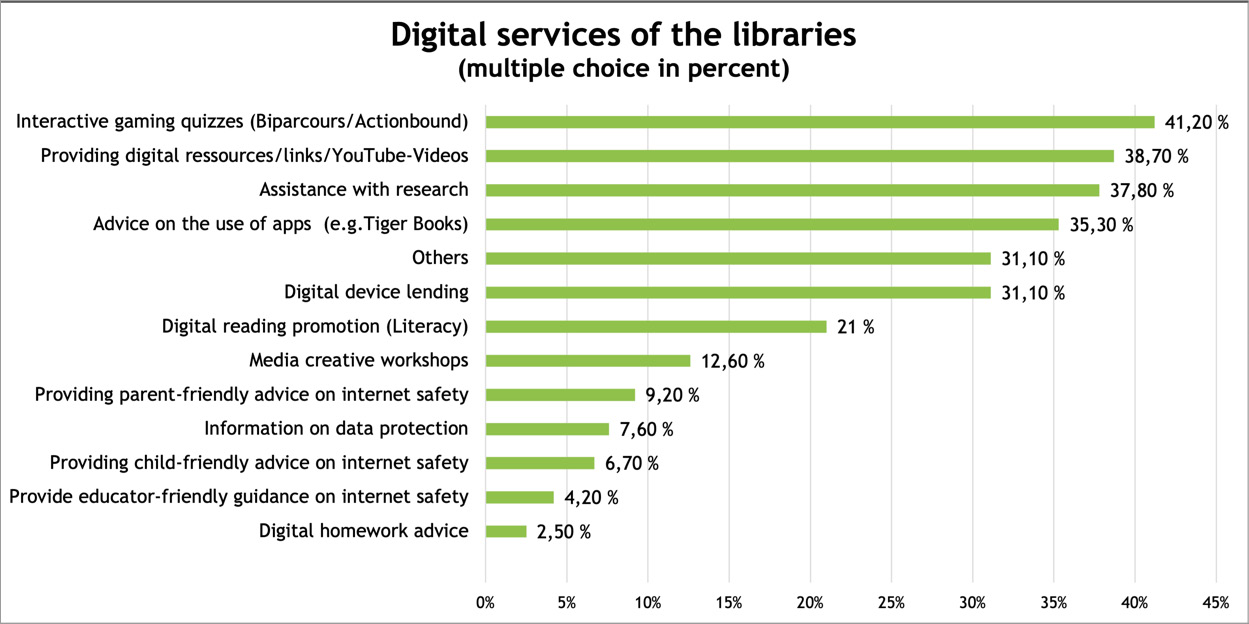
Fig. 2: Digital services of the libraries (N=119)
Digital support offerings or workshops were offered less frequently. It should be noted, however, that these are rather general offerings that do not necessarily represent collaborative projects with schools.
We asked for possible reasons why there was no contact during the lockdowns. In addition to references to school closures and requirements due to the pandemic, the following arguments were given:25
- “There was no possibility of cooperation. The schools were much too busy with themselves. Cooperation was not desired.”
- “The fact that the respective colleague did not seek contact and did not develop a digital concept that could be used in the pandemic.”
- “The contact persons changed.”
In addition, lack of staff, as well as lack of time were stated as reasons for a lack of or decrease in contact with schools, e.g.:
- “Too few staff.”
- “The teaching staff is busy with its (own) problems in the school. As a librarian, you are the disruptive one; only individuals are responsive and open to collaboration.”
The answers showed that during the lockdowns, teachers were fully involved in teaching and reaching all children despite the circumstances leaving no capacity for cooperation with libraries. Moreover, these exemplary answers stand for many statements emphasizing that fixed contact persons and binding agreements and structures on both sides are necessary for cooperation. Furthermore, it becomes clear libraries showed themselves as more flexible than the schools during the lockdown, as they quickly adapted their offers.
3.2 Librarians’ digital competence
The second part of the questionnaire focused on the digital competencies of the librarians. First, they were asked to assess themselves using a single-choice question based on the DigCompEdu framework. The DigCompEdu is the European Commission’s digital literacy framework, covering student and teacher competencies.26 It encompasses the three areas of educators’ professional competences, educators’ pedagogic competencies, and learners’ competencies. In addition to this competence framework, the European Commission provides a reflection tool for ascertaining one’s competence level. The competence levels are divided into six levels from A1 to C2, according to the Common European Framework of Reference.27 Based on the description of these competence levels, the answer options were formulated (fig. 3).28
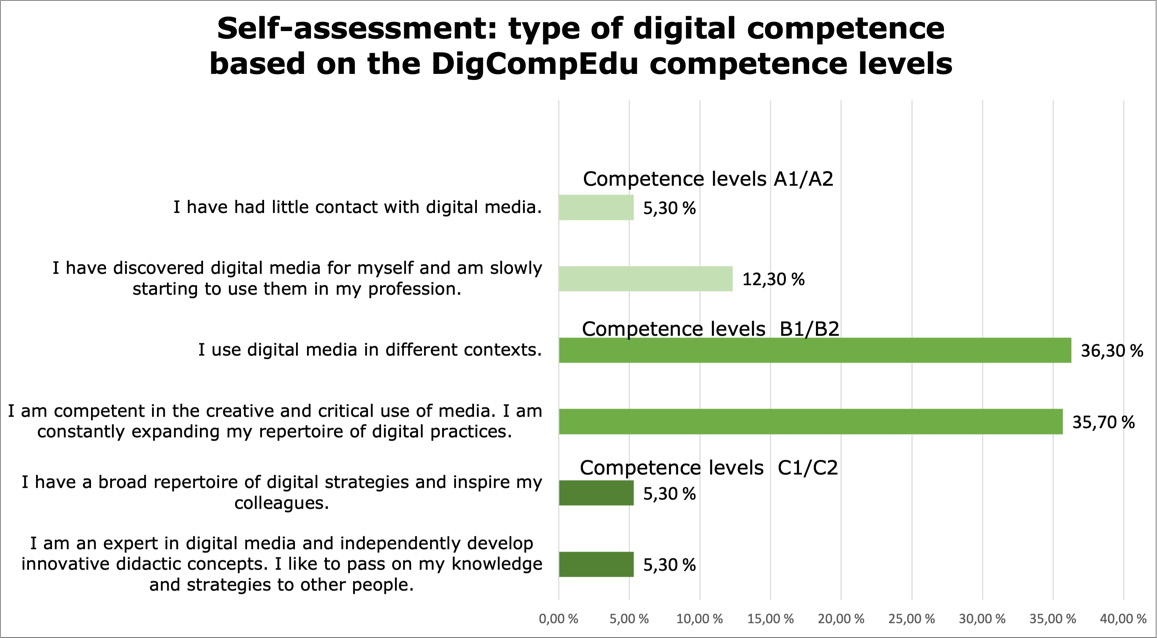
Fig. 3: Self-assessment. Type of digital competence based on the DigCompEdu competence levels (N=171)
More than 70 % of the librarians surveyed assessed their competencies in the area of competency level B, i.e., being capable of using digital media in various contexts. However, they did not consider themselves experts, meaning they only trust themselves to develop new didactic concepts to a minimal extent.
Next, the librarians were asked to assess specific competencies on a Likert scale. On this scale, they could rate themselves from not at all competent to very competent in various areas (fig. 4).
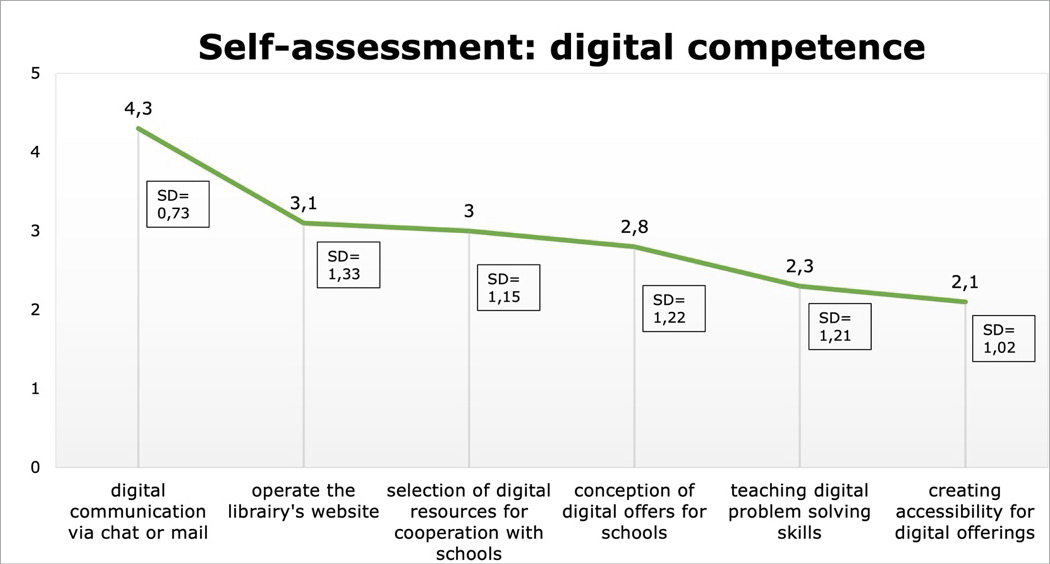
Fig. 4: Self-assessment of digital competence (N=168-173, Scale: 0=not competent at all, 5=very competent)
The librarians considered themselves as quite competent in the use of mail programs or the design of the homepage, while less competent in the conception of digital offerings or the teaching of digital problem-solving skills. Inclusion competence, shown in the last item, turns out to be the weakest. However, the high standard deviation of the answers in almost all areas also shows how heterogeneous the library staff is. There seems to be an awareness of the need for change and a willingness to be creative in this area – but the digital and didactic skills to do so are only available in very few cases.
3.3 Challenges of digital work
The librarians surveyed see challenges for digital work due to a lack of time resources (69,3 %), a lack of equipment (49 %), and poor digital skills (41,2 %). Legal uncertainties (38,6 %) and problems communicating with the municipality (28,1 %) were also cited. Fig. 5 lists all aspects that were stated in the multiple-choice questionnaire. The colour scheme shows that the areas of responsibility lie with the library as an institution, the municipality as a political authority, and the partner school.
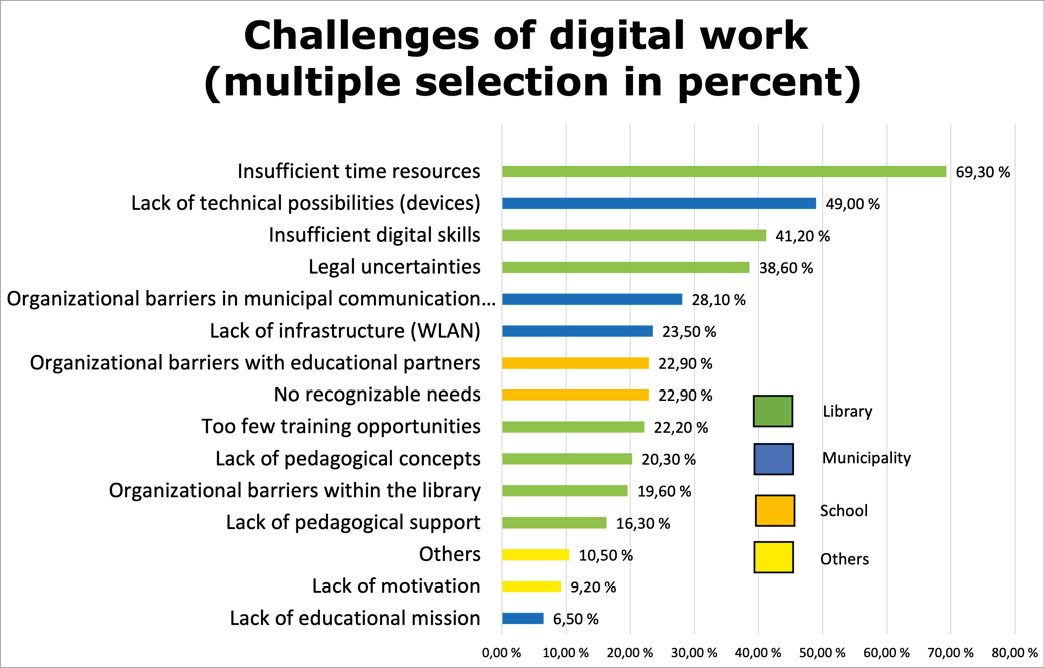
Fig. 5: Challenges for digital work (N=153)
3.4 Lessons learned from the pandemic
In addition, questions were asked about the lessons learned from the pandemic – at the micro-level, i.e., from the individual’s perspective, as well as at the meso-level, i.e., from the perspective of the library as an institution. At the micro-level, it was possible to collect the following statements, among others, which refer to positive experiences:
- “It was fascinating to see how well and, in most cases, how easy it is to develop digital offerings.”
- “Where there is a will, there is a way!”
- “Digital skills, flexibility, getting involved with new things”.
- “I was able to continue my education much more than usual (...) thanks to numerous online training opportunities.”
- “Expansion of my digital competencies in terms of chats, videoconferencing (...).”
At the meso-level, we asked what lessons could be learned from the pandemic from the institution’s perspective. Although some of these also refer to positive experiences, critical comments were also collected.
- “Being brave, just trying things out”.
- “The technical equipment is catastrophic, unfortunately so are the hierarchical structures, there are no incentives other than personal motivation [...]”.
- “Target group students/youth is extremely difficult to reach without the school as an intermediary.”
- “How necessary we are as educational partners”.
- “Further training measures are inevitable”.
Finally, respondents were asked which digital offerings should be retained. Generally, a positive attitude toward digital offerings and their further development was evident. A majority of the librarians want to retain digitally developed services such as video tutorials or the use of the Zoom platform. Nevertheless, some voices show a critical attitude, reject the further use of digital services and want to include only online lending.
4. Discussion
The study aimed to determine whether and how collaborations between libraries and schools occurred during the lockdowns. Recommendations for action in various areas can be derived from the results obtained.
Regarding educational partners, it was shown that elementary schools were the more reliable collaborative partners. Before the lockdowns, analog offerings were predominant, and the percentage of digital offers was correspondingly low. However, the lockdowns led to a significant increase in digital formats. Now it is important not to return to a purely analog product range, but to retain the digital offerings that the library designed. To ensure that cooperation partners also use the digital offerings, it is essential to advertise them on various platforms. Permanent digital-savvy contact persons at the library, who also communicate with the outside world, can facilitate cooperation and create sustainability. The results of the survey show that the personal level currently plays a decisive role in the cooperation between the institutions. Therefore, contact beyond individuals must be strengthened to create commitment. Both libraries and schools need to create sustainable structures that institutionalize educational cooperation. In order to improve the important communication and joint work of libraries and schools, awareness should be raised on both sides, among prospective teachers and prospective librarians, as early as during their studies and training. As far as the libraries themselves are concerned, it can be stated that they are in different positions, both technically and in terms of their competencies. They need support from the municipalities regarding digital infrastructure and an appropriate number of staff positions.
In addition, the study gives an impression of the media competence assessment of average library staff. Most of the librarians surveyed consider themselves relatively fit in dealing with digital media. At this point, however, the study’s limitations must also be pointed out. The sample of those who completed the questionnaire is self-selecting. It can be assumed that colleagues with a relatively low affinity for the topic would not participate in such a survey in the first place. Nevertheless, the data show that librarians need support in the creative development of their didactic formats. For this reason, continuing education programs are still necessary.
Last but not least, it is crucial to understand digitality not as something temporary but as the permanent context of social communication and thus as the language of the 21st century.29 According to the principle of “strengthening strengths”, it seems to be a sensible management task to have educational cooperations supervised by flexible employees who are particularly affine to the digital world and have strong communication skills. They can keep up with the pace of change in digital work processes, design new offerings didactically, and communicate them to the partner institutions.
References
- Bäßler, Kirstin: Bibliotheken im digitalen Wandel. Der Deutsche Bibliotheksverband unterstützt mit verschiedenen Programmen die Transformation von Bibliotheken – gerade in Zeiten der Pandemie, in: BuB 73 (05), 2021, pp. 234–236.
- Bildungspartner NRW: Kooperation mit außerschulischen Partnern – didaktische Potentiale, 20.03.2018, <https://www.bildungspartner.schulministerium.nrw.de/Bildungspartner/Material/Basismaterial/Kooperation_mit_ausserschulischischen_Partnern_Didaktische_Potentiale.pdf>, last accessed: 09.11.2022.
- Bildungspartner NRW: Evaluationsbericht 2021. Digitale Lernangebote in Bildungspartnerschaften, 2021 <https://www.bildungspartner.schulministerium.nrw.de/Bildungspartner/Material/Basismaterial/Evaluationsbericht-2021.pdf>, last accessed: 09.11.2022.
- Böttcher, Carina; Breidlid, Jacqueline: Bibliotheken als wichtige Akteure der außerschulischen Bildungsarbeit. Kreative Bildungspartner vor, während und nach Corona / Zahlreiche Förderprogramme, in: BuB 73 (08/09), 2021, pp. 462–465.
- Deutscher Bibliotheksverband: Öffentliche Bibliothek 2025. Leitlinien für die Entwicklung der Öffentlichen Bibliotheken, Februar 2021, <https://www.bibliotheksverband.de/sites/default/files/2021-03/Positionspapier_ÖB_2025_FINAL_WEB.pdf>, last accessed: 09.11.2022.
- Deutscher Bibliotheksverband: Bericht zur Lage der Bibliotheken. Zahlen und Fakten 2020/2021, 2021, <https://www.bibliotheksverband.de/sites/default/files/2020-12/Bericht_zur_Lage_2020__2021.pdf>, last accessed: 09.11.2022.
- Deutsches Schulbarometer Spezial. Lehrerbefragung zur Corona-Krise, 2020, <https://
deutsches-schulportal.de/unterricht/lehrer-umfrage-deutsches-schulbarometer-spezial-corona-krise-april-2020/>, last accessed: 09.11.2022. - Digital Competence Framework for Educators 2022, European Commission, <https://joint-
research-centre.ec.europa.eu/digcompedu_en>, last accessed: 09.11.2022. - Digitale Kompetenz Lehrender, 2022, https://joint-research-centre.ec.europa.eu/system/files/2018-09/digcompedu_leaflet_de_2018-01.pdf, last accessed: 09.11.2022.
- Keller-Loibl, Kerstin; Brandt, Susanne: Leseförderung in Öffentlichen Bibliotheken, Berlin, München 2015.
- Labusch, Amelie; Eickelmann, Birgitt; Conze, Daniela: ICILS 2018 #Transfer. Gestaltung digitaler Schulentwicklung in Deutschland, Münster 2020. Online: <https://doi.org/10.31244/9783830993087>.
- Liquid infrastructure, Accenture, <https://www.accenture.com/nz-en/insights/interactive/fjord-trends-liquid-infrastructure>, last accessed: 09.11.2022>.
- Marci-Boehncke, Gudrun: Das Spiralcurriculum als Eckpfeiler. Optionen für eine bibliotheksdidaktische Grundlegung, in: Stang, Richard; Umlauf, Konrad (Hg.): Lernwelt Öffentliche Bibliothek. Dimensionen der Verortung und Konzepte, Berlin, Boston 2018, pp. 70–80.
- Marci-Boehncke, Gudrun; Rath, Matthias: Education with digital culture. Shifting the paradigms of prospective knowledge by mediatization, in: Medien Journal 44 (1), 2020, pp. 5–17.
- Marci-Boehncke, Gudrun; Vogel, Tatjana: Experts of reading. Teachers and librarians as partners for digital readership. An evaluated teaching-model in cooperation of TU Dortmund, the BMBF/Mercator-Initiative BiSS (Education in language and writing) and the Technical University of Cologne, in: INTED 2017 Proceedings, <https://doi.org/10.21125/iceri.2017.2331>.
- Medienpädagogischer Forschungsverbund Südwest: JIMplus. Lernen und Freizeit in der Corona-Krise [Slides], 21.04.2020, <https://www.mpfs.de/fileadmin/files/Studien/JIM/JIMplus_2020/JIMplus_2020_Corona.pdf>, last accessed: 09.11.2022.
- Nussbaum, Martha: Creating capabilities. The human development approach. Cambridge, Mass. 2011.
- Oldenburg, Ray: The great good place. Cafés, coffee shops, bookstores, bars, hair salons, and other hangouts at the heart of a community, New York 1989.
- Oldenburg, Ray: Celebrating the Third Place. Inspiring stories about the great good places at the heart of our communities, New York 2001.
- Seidl, Tobias; Vonhof, Cornelia: Bibliotheken sind da – was Bibliotheken in der Corona-Krise leisten (können). Eine Ad-hoc-Studie zu den Angeboten von Bibliotheken in Baden-Württemberg, in: BuB 73 (05), 2021. pp. 244–245.
- Sühl-Strohmenger, Wilfried: Dimensionen der Learning und Teaching Library. Veränderung von Lehr- und Lernkontexten in Öffentlichen Bibliotheken, in: Stang, Richard; Umlauf, Konrad (Hg.): Lernwelt Öffentliche Bibliothek. Dimensionen der Verortung und Konzepte. Berlin, Boston 2018, pp. 57–69.
- Vogt, Hannelore: Nicht nur in Zeiten der Pandemie. Überlegungen zu Veränderungen in der Stadtbibliothek Köln, in: BuB 73 (05), 2021, pp. 238–241.
1 Cf. Oldenburg, Ray: The great good place. Cafés, coffee shops, bookstores, bars, hair salons, and other hangouts at the heart of a community, New York 1989, and Oldenburg, Ray: Celebrating the Third Place. Inspiring stories about the great good places at the heart of our communities, New York 2001.
2 Liquid Infrastructure, Accenture, <https://www.accenture.com/nz-en/insights/interactive/fjord-trends-liquid-
infrastructure>, last accessed: 09.11.2022.
3 Cf. Vogt, Hannelore: Nicht nur in Zeiten der Pandemie. Überlegungen zu Veränderungen in der Stadtbibliothek Köln, in: BuB 73 (05), 2021, pp. 238–241, and cf. Böttcher, Carina; Breidlid, Jacqueline: Bibliotheken als wichtige Akteure der außerschulischen Bildungsarbeit. Kreative Bildungspartner vor, während und nach Corona / Zahlreiche Förderprogramme, in: BuB 73 (08/09), 2021, pp. 462–465.
4 Cf. Marci-Boehncke, Gudrun; Vogel, Tatjana: Experts of reading. Teachers and librarians as partners for digital readership. An evaluated teaching-model in cooperation of TU Dortmund, the BMBF/Mercator-Initiative BiSS (Education in language and writing) and the Technical University of Cologne, in: INTED 2017 Proceedings, <https://doi.org/10.21125/iceri.2017.2331>.
5 Cf. Bäßler, Kirstin: Bibliotheken im digitalen Wandel. Der Deutsche Bibliotheksverband unterstützt mit verschiedenen Programmen die Transformation von Bibliotheken – gerade in Zeiten der Pandemie, in: BuB 73 (05), 2021, pp. 234–236.
6 Cf. Deutscher Bibliotheksverband: Öffentliche Bibliothek 2025. Leitlinien für die Entwicklung der Öffentlichen Bibliotheken, Februar 2021, <https://www.bibliotheksverband.de/sites/default/files/2021-03/Positionspapier_ÖB_2025_FINAL_WEB.pdf>, last accessed: 09.11.2022.
7 Deutscher Bibliotheksverband: Bericht zur Lage der Bibliotheken. Zahlen und Fakten 2020/2021, 2021, <https://www.bibliotheksverband.de/sites/default/files/2020-12/Bericht_zur_Lage_2020__2021.pdf>, last accessed: 09.11.2022.
8 Cf. Nussbaum, Martha: Creating capabilities. The human development approach. Cambridge, Mass. 2011.
9 Cf. ibid., p. 21.
10 Cf. ibid., p. 22.
11 Cf. Sühl-Strohmenger, Wilfried: Dimensionen der Learning und Teaching Library. Veränderung von Lehr- und Lernkontexten in Öffentlichen Bibliotheken, in: Stang, Richard; Umlauf, Konrad (Hg.): Lernwelt Öffentliche Bibliothek. Dimensionen der Verortung und Konzepte. Berlin, Boston 2018, pp. 57–69.
12 Bildungspartner NRW: Kooperation mit außerschulischen Partnern – didaktische Potentiale, 20.03.2018, <https://www.bildungspartner.schulministerium.nrw.de/Bildungspartner/Material/Basismaterial/Kooperation_mit_
ausserschulischischen_Partnern_Didaktische_Potentiale.pdf>, last accessed: 09.11.2022.
13 Marci-Boehncke, Gudrun: Das Spiralcurriculum als Eckpfeiler. Optionen für eine bibliotheksdidaktische Grundlegung, in: Stang, Richard; Umlauf, Konrad (Hg.): Lernwelt Öffentliche Bibliothek. Dimensionen der Verortung und Konzepte, Berlin, Boston 2018, pp. 70–80.
14 Marci-Boehncke, Gudrun; Rath, Matthias: Education with digital culture. Shifting the paradigms of prospective knowledge by mediatization, in: Medien Journal 44 (1), 2020, p. 12.
15 Cf. Keller-Loibl, Kerstin; Brandt, Susanne: Leseförderung in Öffentlichen Bibliotheken, Berlin, München 2015, and Marci-Boehncke; Vogel: Experts of reading, 2017.
16 Cf. Labusch, Amelie; Eickelmann, Birgitt; Conze, Daniela: ICILS 2018 #Transfer. Gestaltung digitaler Schulentwicklung in Deutschland, Münster 2020. Online: <https://doi.org/10.31244/9783830993087>, p. 39.
17 Cf. Deutsches Schulbarometer Spezial. Lehrerbefragung zur Corona-Krise, 2020, <https://deutsches-schulportal.de/unterricht/lehrer-umfrage-deutsches-schulbarometer-spezial-corona-krise-april-2020/>, last accessed: 09.11.2022.
18 Cf. Medienpädagogischer Forschungsverbund Südwest: JIMplus. Lernen und Freizeit in der Corona-Krise [Slides], 21.04.2020, <https://www.mpfs.de/fileadmin/files/Studien/JIM/JIMplus_2020/JIMplus_2020_Corona.pdf>, last accessed: 09.11.2022.
19 Cf. Vogt: Nicht nur in Zeiten der Pandemie, 2021.
20 Cf. Böttcher; Breidlid: Bibliotheken als wichtige Akteure der außerschulischen Bildungsarbeit, 2021.
21 Cf. Seidl, Tobias; Vonhof, Cornelia: Bibliotheken sind da – was Bibliotheken in der Corona-Krise leisten (können). Eine Ad-hoc-Studie zu den Angeboten von Bibliotheken in Baden-Württemberg, in: BuB 73 (05), 2021. pp. 244–245.
22 Cf. Bildungspartner NRW: Evaluationsbericht 2021. Digitale Lernangebote in Bildungspartnerschaften, 2021 <https://www.bildungspartner.schulministerium.nrw.de/Bildungspartner/Material/Basismaterial/Evaluationsbericht-2021.pdf>, last accessed: 09.11.2022.
23 Cf. Marci-Boehncke; Vogel: Experts of reading, 2017.
24 Due to the relatively small number of responses, the given sample has to be understood as a convenience sample, whose representativity is correspondingly lower. Nevertheless, the results obtained here can be an initial point for a more extensive and representative study.
25 In the following, the original statements of the survey participants have been translated from German to English.
26 Cf. Digital Competence Framework for Educators 2022, European Commission, <https://joint-research-centre.ec.europa.eu/digcompedu_en>, last accessed: 09.11.2022.
27 Cf. Digitale Kompetenz Lehrender, 2022, <https://joint-research-centre.ec.europa.eu/system/files/2018-09/
digcompedu_leaflet_de_2018-01.pdf>, last accessed: 09.11.2022.
28 Due to the survey period, descriptions of the competency levels refer to the reflection tool, which was valid until 2022. Since 31.01.22, only the updated tool is online.
29 Cf. Marci-Boehncke; Rath: Education with digital culture, 2020.
